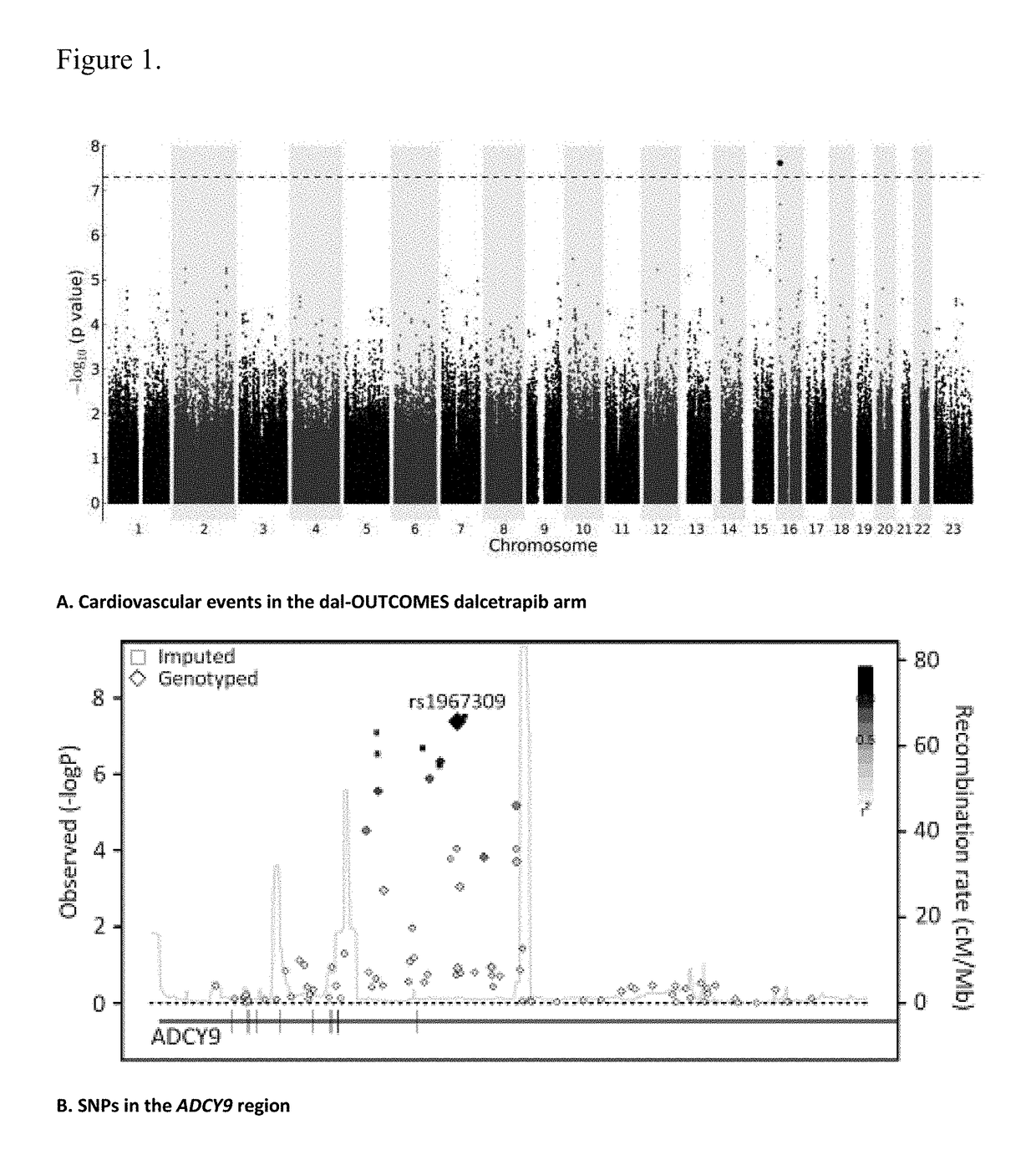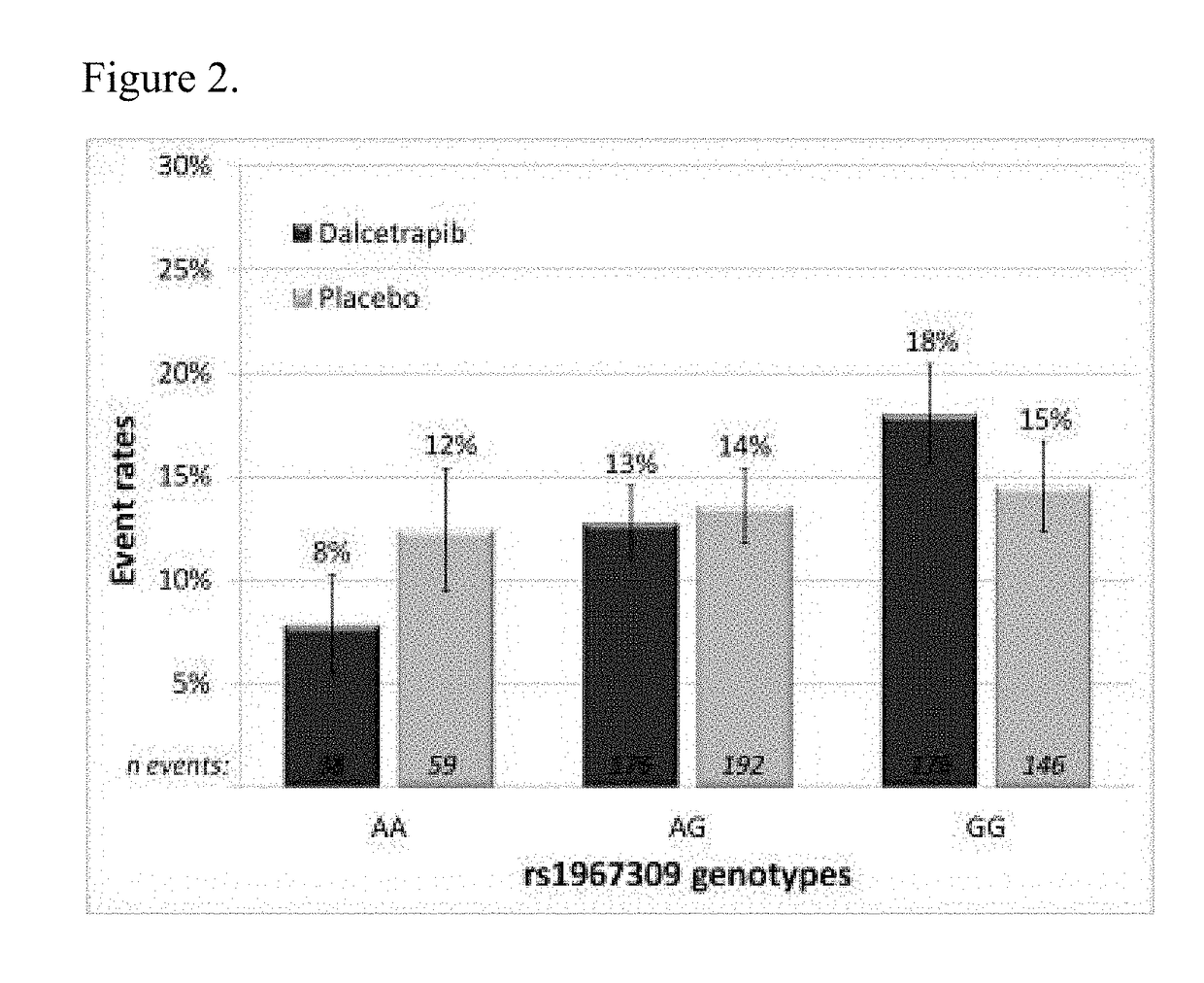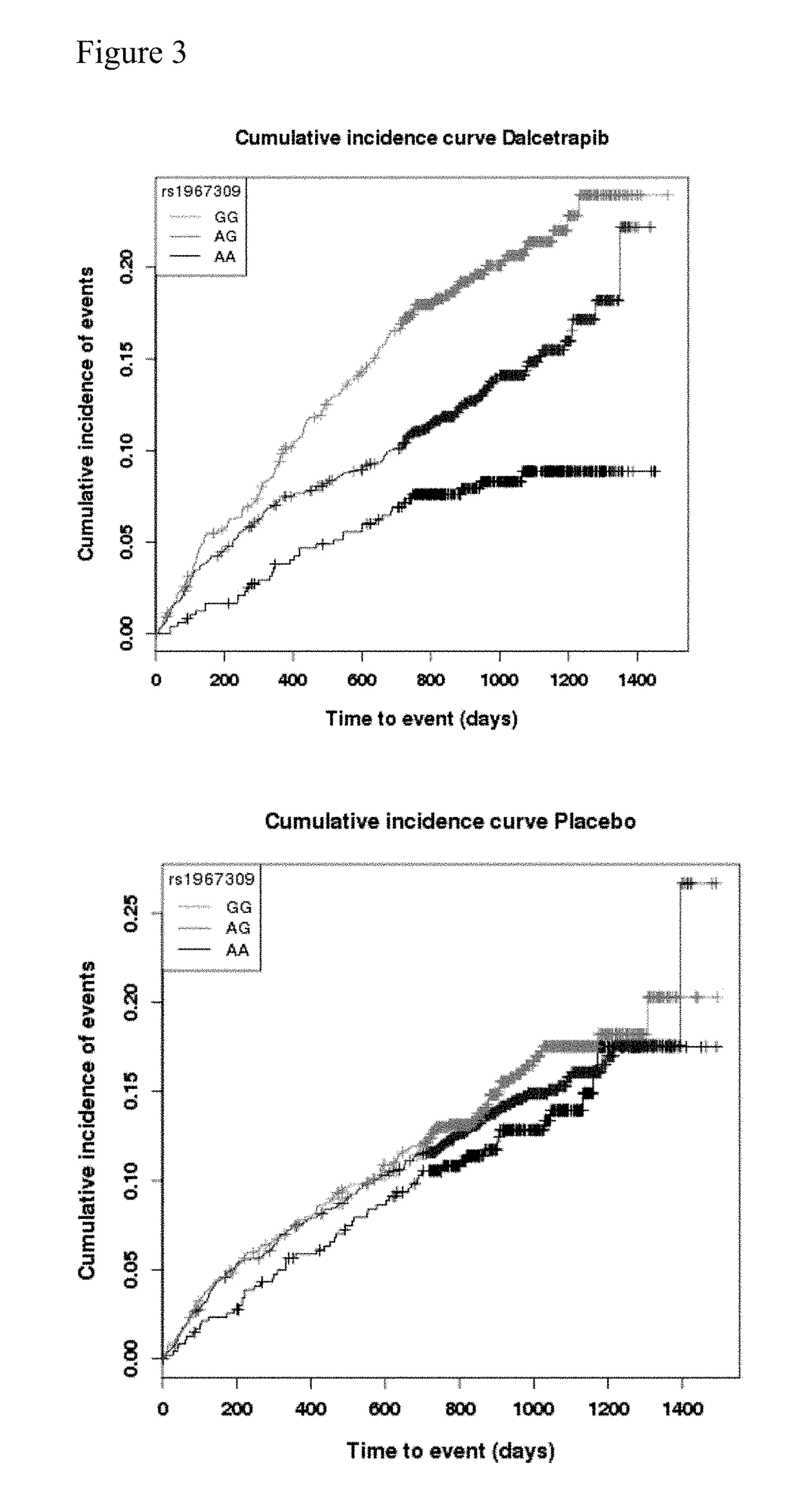Genetic markers for predicting responsiveness to therapy with hdl-raising or hdl mimicking agent
a technology of gene expression and response prediction, applied in the field of gene expression, can solve the problems of limited stratification of the population by genotype for a specific therapeutic intervention, affecting the safety and effectiveness of drugs in all patients, and imposing an enormous burden on health care systems internationally
- Summary
- Abstract
- Description
- Claims
- Application Information
AI Technical Summary
Benefits of technology
Problems solved by technology
Method used
Image
Examples
example 1
[0238]Dal-OUTCOMES trial (NC20971) was a double blind, randomized, placebo-controlled, parallel group, multi-center, phase III study to assess the safety and efficacy of the CETP inhibitor dalcetrapib in patients recently hospitalized for an Acute Coronary Syndrome (ACS). At time of the interim analysis the study included 15871randomized patients, distributed over two treatment arms: placebo (7933 patients) and dalcetrapib (600 mg daily; 7938 patients). The study has shown no evidence of reduction of the event rate in the primary efficacy endpoint in the dalcetrapib arm compared to the placebo arm. The dal-OUTCOMES study details can be found in G. Schwartz et al., N. Engl. J. Med. 367; 22, 2012.
[0239]dal-Outcomes patients were recruited 4 to 12 weeks following hospitalization for acute coronary syndrome characterized by elevated cardiac biomarkers, with symptoms of acute myocardial ischemia, ischemic electrocardiographic abnormalities that were new or presumed to be new, or loss of ...
example 2
[0252]The dal-PLAQUE-2 study (Tardif J C et al, Circulation Cardiovascular imaging 2011; 4:319-33) was a phase 3b multicenter, double-blind, randomized, placebo-controlled, parallel group trial designed to evaluate the effect of dalcetrapib on atherosclerotic disease progression in patients with evidence of coronary artery disease and carotid intima media thickness of at least 0.65 mm in the far wall of the common carotid arteries, as assessed by B-mode ultrasonography. A total of 931 patients were randomized to receive dalcetrapib 600 mg daily or matching placebo with intended treatment duration of 24 months. However, the trial was terminated prematurely concurrent with the termination of dal OUTCOMES (the latter due to futility). Patients continued study medication until they returned for follow-up carotid imaging at 12 months. Carotid B-mode ultrasound recordings at baseline, month 6, and month 12 were analyzed centrally at the core laboratory of the Montreal Heart Institute. Int...
PUM
| Property | Measurement | Unit |
|---|---|---|
| concentration | aaaaa | aaaaa |
| concentrations | aaaaa | aaaaa |
| thickness | aaaaa | aaaaa |
Abstract
Description
Claims
Application Information
 Login to View More
Login to View More - R&D
- Intellectual Property
- Life Sciences
- Materials
- Tech Scout
- Unparalleled Data Quality
- Higher Quality Content
- 60% Fewer Hallucinations
Browse by: Latest US Patents, China's latest patents, Technical Efficacy Thesaurus, Application Domain, Technology Topic, Popular Technical Reports.
© 2025 PatSnap. All rights reserved.Legal|Privacy policy|Modern Slavery Act Transparency Statement|Sitemap|About US| Contact US: help@patsnap.com



